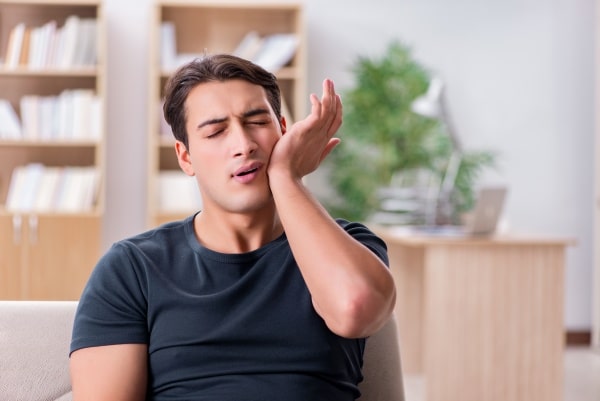If you notice pain in your jaw, you may be dealing with one of the many types of TMJ disorders. This condition may cause spasms of the facial muscles and clicking or popping sounds in the jaw. Temporomandibular joint (TMJ) disorders typically make eating and talking painful or difficult. The dentist may recommend different treatments for the condition, including muscle relaxers and physical therapy. In this article, you will discover how these two options can help patients with TMJ disorders.
How to detect TMJ disorder
If the patient experiences headache and jaw pain due to problems in their TMJ, then other symptoms are likely to show up as well, including:
- Difficulty with biting and chewing
- Clicking or popping sounds during jaw movement
- Earaches and pain in the facial muscles
- Tender jaws
- Fibromyalgia
- Restriction when opening or closing the jaw
Millions of Americans suffer from a type of TMJ disorder. Knowing the symptoms and receiving the appropriate treatment is crucial toward getting permanent relief. Patients who are experiencing frequent headaches, accompanied by some of the symptoms listed above, need to consult their dentist about TMJ disorders. Treating the issue and not just managing the symptoms will ensure that the patient can find a long-term solution.
Physical therapy
Physical therapy is one of the options that the dentist will recommend for relieving jaw pain. The physical therapist can create a treatment plan that comprises learning and practicing methods of restoring normal jaw mobility. The objective of physical therapy as a treatment for TMJ disorders is relaxation, stretching and freeing tight muscles and scar tissues. Physical therapy forms a crucial part of recovery after a TMJ surgery since it helps reduce chances of scar tissue formation and free up the muscles.
The physical therapist will examine the patient to develop a plan customized to their specific symptoms, general wellbeing and age. Common methods under physical therapy for treating TMJ include:
- Physical activities to increase range of motion and jaw muscle strength
- Massage to ease muscle tension
- Heat and ice treatment to relieve pain and inflammation
- Transcutaneous electrical nerve stimulation (TENS), which involves applying a mild electrical current to the skin over the temporomandibular joints to disrupt pain signals, ease muscles and enhance blood circulation.
- Ultrasound therapy, which involves the use of high-frequency sound waves to alleviate pain and swelling.
Although some of these treatment options seem unconventional, they have all been proven to be effective as part of a holistic treatment plan for TMJ disorders. These physical therapy treatments may also be suggested during recovery for patients who have to undergo surgery for TMJ disorders.
Muscle relaxers
A dentist may also recommend muscle relaxants to alleviate jaw ache and discomfort caused by a TMJ disorder. They are effective for relaxing or easing jaw and facial muscles and reducing muscle spasms. Since muscle relaxants are powerful medications, the dentist may recommend their usage for only a few days or a few weeks. A good example of muscle relaxant for TMJ disorders is diazepam (such as Valium)
In conclusion
Muscle relaxers and physical therapy can be effective in treating TMJ disorders. Contact the dentist as soon as you notice pain or other symptoms of the disorder.
Call our Leawood, KS, dental office to make an appointment with a dentist who may be able to help you find out more about this topic, and improve your oral health.

